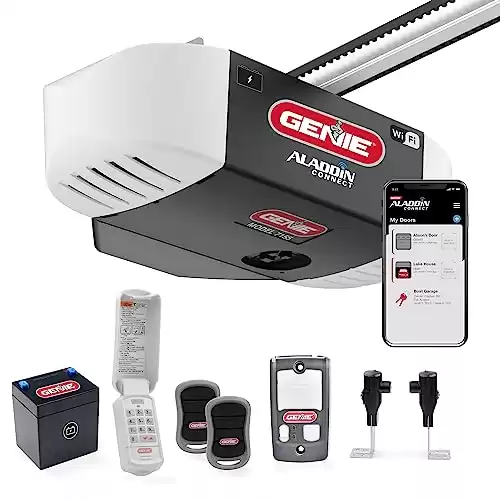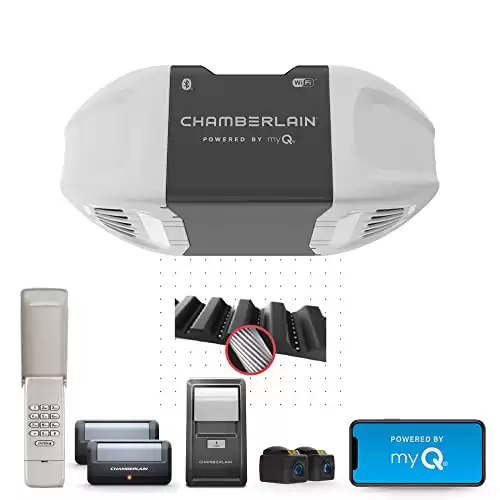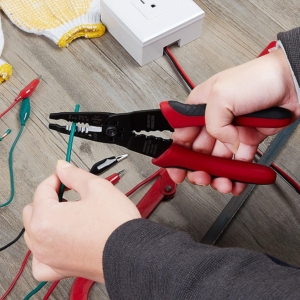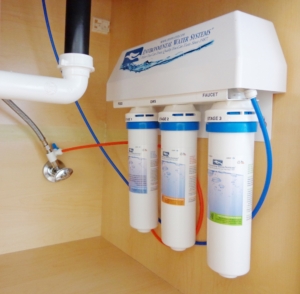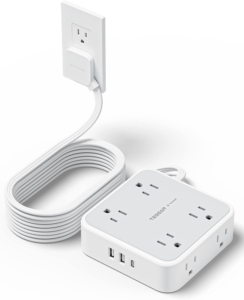The Ultimate Guide to Finding the Best Garage Door Openers
Are you in the market for a new garage door opener? Choosing the right one is important for the smooth operation, convenience, and security of your garage. In this comprehensive guide, we’ll walk you through the essential factors to consider when finding the best garage door opener for your needs. From understanding different types and key features, this guide will equip you with the knowledge to make an informed decision.
Here are five popular garage door opener models:
1. Chamberlain B2405
2. Genie 7155-TKV Smart Garage Door
3. Craftsman ½ HP Chain Drive
|
|
34,81 €
|
$303.99
|
Understanding Garage Door Openers
Garage door openers are essential components that automate the opening and closing of your garage door. Before diving into the selection process, it’s important to understand the different types available:
1. Chain-drive Garage Door Openers:
– Description: Chain-drive openers use a metal chain to lift and lower the garage door.
– Pros: They are typically more affordable and suitable for heavy-duty garage doors.
– Cons: They tend to produce more noise during operation.
2. Belt-drive Garage Door Openers:
– Description: Belt-drive openers use a rubber belt to move the garage door.
– Pros: They are known for their quiet operation and are ideal for garages near living spaces.
– Cons: They are slightly more expensive than chain-drive openers.
3. Screw-drive Garage Door Openers:
– Description: Screw-drive openers use a threaded steel rod to lift and lower the garage door.
– Pros: They offer a balance between price, performance, and noise level.
– Cons: They may not be suitable for hefty garage doors.
When evaluating garage door openers, consider the following key features:
Assessing Your Garage Door Needs
Before you begin your search for the best garage door opener, it’s essential to assess your specific garage door needs. Consider the following factors:
1. Size and Weight of the Garage Door:
– Measure the height, width, and weight of your garage door to ensure compatibility with the opener.
2. Insulation Needs:
– Determine if you require an opener that can handle insulated garage doors for temperature control.
3. Special Considerations:
– Identify any unique circumstances, such as low headroom or high wind resistance, which may require specific opener features.
Researching the Best Garage Door Opener Brands
Now that you understand the different types of garage door openers and have assessed your needs, it’s time to research the best brands in the market. Here are some reputable brands to consider:
Here are the reputable garage door opener brands and their notable features:
1. LiftMaster:
– Wide range of options to suit different needs
– Robust construction and long-lasting performance
– Advanced safety features
– Compatibility with smart home systems
2. Chamberlain:
– Dependable and user-friendly openers
– Diverse lineup, including chain-drive and belt-drive options
– Quiet operation
– Strong lifting capacities
– Enhanced security features
3. Genie:
– Innovative technology
– Range of opener models, including chain-drive, belt-drive, and screw-drive systems
– Quiet operation
– Strong lifting capabilities
– Safety features like automatic reverse and Intellicode technology
4. Craftsman:
– Reliable and affordable openers
– Solid build and durability
– Smooth operation
– Safety features like anti-burglary coding and sensors
5. Sommer:
– Advanced technology and superior craftsmanship
– Quiet operation with direct-drive system
– Enhanced safety features
– Energy-saving capabilities
6. Marantec:
– Innovative and reliable openers
– Belt-drive and chain-drive systems available
– Quiet operation
– Strong lifting capacities
– Advanced features like rolling code encryption and LED lighting
7. Overhead Door:
– Manufacturing openers for over 95 years
– Commitment to quality, durability, and customer satisfaction
– Smooth operation
– Robust construction
– Advanced safety features
These brands have distinct features that set them apart, allowing customers to find the garage door opener that meets their specific needs and preferences.
|
|
34,81 €
|
$303.99
|
Key Factors to Consider to Find the Best Garage Door Opener for You
When choosing the best garage door opener, there are several key factors to consider. Let’s explore them in detail:
1. Horsepower:
Horsepower (HP) is a measurement used to indicate the power and lifting capacity of a garage door opener. When it comes to garage door openers, horsepower refers to the motor’s strength and ability to handle the weight of the garage door.
The most common horsepower ratings for residential garage door openers are ½, ⅓, ¾, and 1 HP. The choice of horsepower depends on the size, weight, and type of garage door you have.
Here’s a breakdown of how horsepower impacts the performance of a garage door opener:
- ½ HP: This horsepower rating is suitable for standard, single-car garage doors made of lightweight materials such as aluminum or fiberglass. It can handle garage doors with typical dimensions and weights without any issues. A ½ HP opener provides sufficient power for most residential applications.
- ⅓ HP: Although less common than ½ HP, a ⅓ HP opener can still handle smaller and lighter garage doors. It is suitable for single-car garage doors made of lightweight materials. However, it may struggle with larger or heavier doors, and it’s important to check the manufacturer’s specifications to ensure compatibility.
- ¾ HP: If you have a larger or heavier garage door, such as a double-car garage door or one made of solid wood, opting for a ¾ HP opener is recommended. This higher horsepower rating provides the necessary power to lift and lower the door with ease. It is also suitable for insulated doors that are generally heavier due to added insulation.
- 1 HP: A 1 HP opener is the most powerful option available for residential garage doors. It is suitable for extremely large and heavy doors, such as those found in commercial settings or high-end residential properties. A 1 HP opener can handle the significant weight of these doors and provide smooth and efficient operation.
It’s important to note that while higher horsepower indicates greater lifting capacity, it does not necessarily translate to faster door operation. The speed of the door is determined by other factors, such as the opener’s drive system.
When selecting a garage door opener, consider the size, weight, and material of your garage door. Ensure that the horsepower rating matches the door’s requirements to ensure optimal performance, smooth operation, and longevity of the opener.
2. Drive System:
The drive system of a garage door opener refers to the mechanism that moves the garage door up and down. There are three main types of drive systems used in garage door openers: chain-drive, belt-drive, and screw-drive.
- Chain-Drive:
Chain-drive openers use a metal chain, similar to a bicycle chain, to operate the garage door. The chain is connected to a trolley that moves along a rail, lifting or lowering the door. This drive system is known for its strength and durability, making it suitable for heavy garage doors.
Pros:
– Cost-effective: Chain-drive openers are generally more affordable compared to other drive systems.
– Reliable: The metal chain is durable and can withstand heavy loads.
– Suitable for heavy doors: Chain-drive openers can handle larger and heavier garage doors with ease.
Cons:
– Noise: Chain-drive openers tend to produce more noise during operation, mainly due to the metal-on-metal contact of the chain moving along the rail.
– Regular Maintenance: The chain may require periodic lubrication to ensure smooth operation and prevent wear and tear.
- Belt-Drive:
Belt-drive openers use a reinforced rubber belt to move the garage door. Similar to chain-drive openers, the belt is connected to a trolley that lifts or lowers the door. The belt-drive system is designed to reduce noise and provide smoother operation.
Pros:
– Quiet Operation: Belt-drive openers are known for their quiet operation due to the absence of metal-on-metal contact.
– Smooth and Reliable: The rubber belt provides a smooth and consistent operation, resulting in less vibration and jarring movements.
– Ideal for Living Spaces: Belt-drive openers are particularly popular for garages attached to living spaces or bedrooms due to their minimal noise output.
Cons:
– Cost: Belt-drive openers are often slightly more expensive than chain-drive openers due to the higher manufacturing cost of the rubber belts.
– Limited Availability: While belt-drive openers are widely available, the range of models and options might be slightly more limited compared to chain-drive openers.
- Screw-Drive:
Screw-drive openers utilize a threaded steel rod that rotates to move the trolley and operate the garage door. As the rod rotates, it lifts or lowers the door. Screw-drive openers are known for their simplicity and minimal moving parts.
Pros:
– Fewer Moving Parts: Screw-drive openers have a simpler design with fewer moving parts, resulting in potentially less maintenance and fewer components that may wear out over time.
– Reliable Performance: Screw-drive openers provide strong lifting capabilities and are suitable for various garage door sizes and weights.
– Fewer Noise Concerns: While not as quiet as belt-drive openers, screw-drive openers are generally quieter than chain-drive openers.
Cons:
– Climate Sensitivity: Screw-drive openers can be more sensitive to temperature fluctuations and are not recommended in extreme temperature environments.
– Lubrication Requirement: The threaded steel rod may require periodic lubrication to maintain smooth operation.
When choosing a drive system for your garage door opener, consider factors such as noise sensitivity, door weight, and personal preferences. Each drive system has its own advantages and considerations, so understanding their characteristics can help you make an informed decision.
3. Noise Level:
The noise level of a garage door opener refers to the sound produced during its operation. Garage door openers can vary significantly in terms of noise output, and the level of noise can be an important consideration, especially for those with living spaces adjacent to or above the garage.
The noise level of a garage door opener is influenced by several factors, including the drive system and the overall design of the opener. Here’s a breakdown of the noise levels typically associated with different types of garage door openers:
- Chain-Drive Openers:
Chain-drive openers tend to produce more noise compared to other drive systems. This is primarily due to the metal-on-metal contact between the chain and the rail during operation. The noise can be described as a rattling or clanking sound. While advancements in technology have led to quieter chain-drive openers, they still generally produce more noise compared to other drive systems. - Belt-Drive Openers:
Belt-drive openers are known for their quiet operation. Instead of a metal chain, these openers use a rubber belt to move the garage door. The absence of metal-on-metal contact significantly reduces noise. Belt-drive openers produce a smooth, muffled sound during operation, making them an ideal choice for garages located near living spaces or bedrooms. - Screw-Drive Openers:
Screw-drive openers fall between chain-drive and belt-drive openers in terms of noise level. They produce less noise compared to chain-drive openers but are not as quiet as belt-drive openers. Screw-drive openers feature a threaded steel rod that moves the door, resulting in a moderate level of noise during operation. However, advancements in technology have improved the noise-reduction capabilities of screw-drive openers over the years.
In addition to the drive system, other factors can contribute to the overall noise level of a garage door opener. These include the quality of materials used, the level of insulation on the opener components, and the presence of additional noise-dampening features.
To choose a garage door opener with a lower noise level, consider the following tips:
1. Opt for a belt-drive opener: If noise reduction is a top priority, choose a belt-drive opener known for its quiet operation.
2. Look for noise-dampening features: Some manufacturers incorporate noise-dampening technologies or materials into their opener designs. These features can help reduce vibrations and minimize noise.
3. Consider insulation: Some openers have insulation on the housing or motor to reduce noise. Insulated openers can help further mitigate noise levels during operation.
4. Read customer reviews: Check reviews and ratings from other users to get an idea of the noise level experienced with specific models or brands.
By considering the noise level and selecting an opener that aligns with your noise sensitivity and living situation, you can enjoy a quieter and more peaceful garage door opening experience.
4. Safety Features:
Garage door openers come equipped with various safety features designed to protect people and property. These safety features aim to prevent accidents, injuries, and damage that could occur during the operation of the garage door. Here are some essential safety features commonly found in garage door openers:
- Automatic Reverse Mechanism:
One of the most crucial safety features in a garage door opener is the automatic reverse mechanism. This feature uses sensors or pressure detection systems to detect objects in the path of a closing door. If an object is detected, the opener immediately reverses the door’s direction, preventing it from closing on the object or person. This feature is particularly important for ensuring the safety of children, pets, and vehicles. - Infrared Sensors:
Infrared sensors, also known as photo-eye sensors, are positioned near the bottom of the garage door on either side. They emit an invisible beam across the door’s path. If the beam is interrupted, such as by a person or object, the sensors communicate with the opener to halt or reverse the door’s movement. Infrared sensors provide an additional layer of safety by detecting any obstructions during door operation. - Manual Release:
In case of a power outage or malfunction, garage door openers are equipped with a manual release mechanism. This allows the door to be disengaged from the opener, enabling manual operation. The manual release is typically a cord or lever that can be pulled or pushed to disengage the door from the opener’s motor. It is essential to know how to operate the manual release mechanism and understand the manufacturer’s instructions for proper usage. - Rolling Code Technology:
Rolling code technology enhances the security of the garage door opener. It uses a unique code that changes with each operation of the remote control or keypad. This prevents potential unauthorized access to your garage by thwarting code grabbing or cloning attempts. Rolling code technology ensures that only authorized remote controls or keypads can operate the opener, adding an extra layer of security to your home. - Force and Contact Detection:
Garage door openers with force and contact detection systems can sense unusual resistance or contact during door operation. If the door encounters excessive force, such as hitting an obstruction or encountering an unusual resistance, the opener will stop or reverse its movement. This feature helps prevent damage to the door, property, or individuals caught in the door’s path. - Security Lighting:
Many garage door openers include built-in security lighting features. These lights automatically turn on when the opener is activated or when motion is detected in the garage. The lighting feature provides improved visibility and enhances safety when entering or exiting the garage, particularly during nighttime operations.
It is important to note that while garage door opener safety features play a significant role in preventing accidents, proper installation, maintenance, and regular testing are improtant. Following manufacturer guidelines, performing routine inspections, and keeping sensors clean and aligned can ensure the continued effectiveness of these safety features.
5. Smart Home Integration:
Smart home integration refers to the ability of a garage door opener to connect and communicate with a home automation system or other smart devices. Smart garage door openers offer enhanced convenience, security, and control by allowing homeowners to operate and monitor their garage doors remotely using smartphone apps, voice commands, or automation routines. Here’s an explanation of smart home integration for garage door openers:
- Remote Control via Smartphone:
Smart garage door openers can be paired with smartphone apps that enable users to control their garage doors remotely. Through the app, homeowners can open, close, and monitor the status of their garage doors from anywhere with an internet connection. This remote control capability offers convenience and flexibility, allowing users to grant access to family members, guests, or delivery personnel when they are not physically present. - Voice Control with Virtual Assistants:
Many smart garage door openers are compatible with popular voice assistant platforms like Amazon Alexa, Google Assistant, or Apple Siri. By connecting the opener to a compatible voice assistant device, users can operate their garage doors using voice commands. This hands-free control enables effortless opening and closing of the garage door by simply speaking a command. - Automation and Integration with Smart Home Systems:
Smart garage door openers can integrate with broader home automation systems, enabling seamless automation and coordination with other smart devices. For example, homeowners can set up automation routines to have the garage door open automatically when they arrive home or close at a specific time every evening. Integration with smart home systems also allows for synchronization with other devices like lights, security cameras, or alarm systems, enhancing the overall security and convenience of the home. - Real-Time Notifications and Monitoring:
Smart garage door openers can send real-time notifications to users’ smartphones, providing alerts whenever the door is opened, closed, or left open for an extended period. This feature enhances security by allowing users to stay informed about garage door activity and take immediate action if necessary. Users can also monitor the garage door’s status remotely, checking if it is securely closed even when they are away from home. - Integration with Home Security Systems:
Smart garage door openers can integrate with home security systems to enhance overall home protection. Integration allows users to incorporate garage door activity into their security monitoring and alarm systems. For example, users can configure their security system to activate or send alerts if the garage door is opened when the alarm is armed, indicating potential unauthorized access.
It’s important to note that for smart home integration, compatibility and connectivity are key factors. Ensure that the garage door opener you choose is compatible with your preferred smart home ecosystem or devices. Manufacturers often provide guidelines and instructions for connecting and configuring smart home integration, allowing users to enjoy the convenience and control offered by a connected and automated home environment.
Garage Door Opener Budget Considerations
While budget is an important consideration, it’s essential to find a balance between price and quality when selecting a garage door opener. Consider the following tips:
1. Determine your budget range based on your requirements and preferences.
2. Look for garage door openers that offer a good balance of features, reliability, and price.
3. Consider long-term savings and potential energy efficiency features when assessing the overall value for money.
The cost of a garage door opener can vary depending on several factors such as brand, features, horsepower, and type of drive system. On average, residential garage door openers can range in price from around $150 to $500. However, it’s important to note that there are also high-end models available that can exceed this price range.
Here’s a breakdown of the price range based on the types of garage door openers:
1. Chain-Drive Openers:
Chain-drive openers are generally more affordable and fall on the lower end of the price spectrum. Depending on the brand and features, chain-drive openers can cost anywhere from approximately $150 to $300.
2. Belt-Drive Openers:
Belt-drive openers tend to be slightly more expensive than chain-drive openers due to their quieter operation. The price range for belt-drive openers is typically between $200 and $400.
3. Screw-Drive Openers:
Screw-drive openers are usually priced in the mid to higher range. Their simplicity and fewer moving parts can contribute to a higher cost. Screw-drive openers typically range from $250 to $500.
It’s worth noting that additional features, such as smart home integration, advanced safety features, battery backup, or high horsepower, can increase the price of a garage door opener. High-end models with premium features and enhanced performance can cost upwards of $500.
Installation costs are not typically included in the price of the garage door opener itself. Installation costs can vary based on factors like the complexity of the installation, local labor rates, and any additional parts or accessories required. It’s recommended to consult with a professional installer or obtain quotes from reputable sources to get an accurate estimate for installation costs.
Overall, the cost of a garage door opener depends on various factors, and it’s essential to consider your specific needs, preferences, and budget when selecting the right opener for your garage.
|
|
34,81 €
|
$303.99
|
Reading Customer Reviews
Reading customer reviews is an excellent way to gauge the performance and reliability of a garage door opener. Here’s how to navigate customer reviews effectively:
1. Look for reputable review websites and forums that provide genuine customer feedback.
2. Pay attention to the overall rating and the specific experiences shared by customers.
3. Consider the number of reviews and the consensus among customers to make an informed decision.
Making an Informed Decision
To make an informed decision when selecting the best garage door opener, follow these steps:
1. Recap the key factors discussed in the guide: horsepower, drive system, noise level, safety features, and smart home integration.
2. Create a checklist based on your garage door needs and preferences, ranking the importance of each factor.
3. Narrow down your options by comparing different models and brands, considering budget and customer reviews.
4. Prioritize the features that align with your specific needs and make your final decision.
Summary
Choosing the best garage door opener requires careful consideration of factors such as type, key features, budget, and customer reviews. By understanding the various options available and evaluating your specific needs, you can confidently select a garage door opener that provides smooth operation, convenience, and security for your garage. Remember to prioritize safety features and explore the possibilities of smart home integration. Armed with the knowledge from this ultimate guide, you are well-equipped to find the perfect garage door opener for your home.


